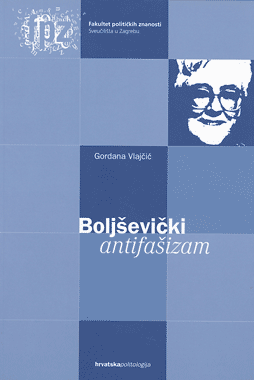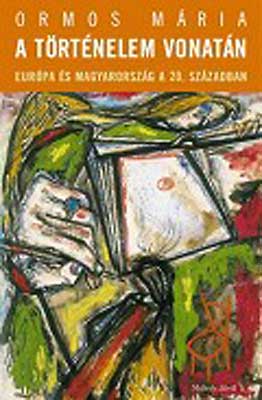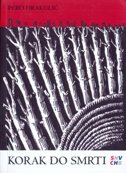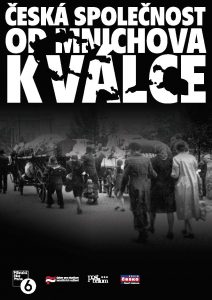
We kindly inform you that, as long as the subject affiliation of our 300.000+ articles is in progress, you might get unsufficient or no results on your third level or second level search. In this case, please broaden your search criteria.


Ovaj Zbornik radova je rezultat konferencije koju je Institut za istoriju u Sarajevu organizirao 12. i 13. maja 2005. povodom 60 godina od završetka Drugogsvjetskog rata. Smatrali smo da je šezdeset godina od završetka Drugog svjetskog rata prilika da se o tome događaju povede naučna rasprava iz perspektive onoga što je slijedilo u kasnijem povijesnom razdoblju.
More...
Suočeni smo s time da se hrvatskome antifašističkom otporu poriču demokratske tekovine, uz obrazloženje kako ih nije moglo ni biti jer je komunističko vodstvo ratne tekovine koalicijske antifašističke Narodne fronte iskoristilo kao politički kapital da bi hrvatskoj naciji nametnulo obnovu južnoslavenske državne zajednice, a njoj boljševičku diktaturu. Unatoč činjenici što je ona i uspostavljena, takav pristup odbacuje i zasluge antifašističke borbe za vraćanje matici zemlji teritorija koji su oteti prije i tijekom Drugoga svjetskog rata, oslobođenje hrvatske nacije kolektivne krivnje za holokaust i genocid, sprečavanje obnove južnoslavenske državne zajednice pod vodstvom dinastije Karađorđevića i svrstavanje hrvatske nacije uz bok pobjedničkoj svjetskoj antifašističkoj koaliciji, a to jesu demokratske tekovine hrvatskoga antifašizma.
More...

“The Train of History” by Mária Ormos invites the reader to two different „journeys”. Reception of both, history and historiography. It is a comprehensive study with author’s vision on Europe, focusing on the Hungarian history and Hungarian identity.
More...
The history of uprising in Nazi extermination camp in Sobibór told by the eye-witnesses who survived and escaped death. 27 testimonies of camp’s prisoners (including two of them who died in the gas chamber) represent over 300.000 of those who perished in Sobibor.
More...
A diary showing extreme experience of being one of 10 people hiding in a 6 square meter cellar. It is a testimony of survival in Kolomyia (today’s Ukraine) where after the liquidation of local ghetto, between winter 1942/43 and spring 1944 author, his wife and group of other Jews managed to escape the chase of Nazi functionaries. Apart from daily problems and complex relationships between the group of people shut and herded in the shelter, the diary refers to relations between Jews and Poles providing them their help.
More...
The story of seven Jews and a catholic priest who spent almost 5 months hidden in the basement in the ruins of Warsaw – city completely destroyed after Warsaw Uprising in 1944. Those “Robinson Crusoes of Warsaw” survived times of the terrific threat: human voices heard from the sewage system, first snow that shut off the ways to reach the food. They had to fight their own nature in extreme conditions and ceaseless danger. Due to their determination and sensitivity they managed to survive. After the liberation of Warsaw on January 17th 1945 they came out from their hideaway.
More...
A thrilling testimony of a Jewish doctor, direct witness of the Holocaust, who lost almost all his loved ones and spent 9 months hidden in an attic of the house inhabited by a Polish family. His testimony was written while hiding in Tłuste (today’s Ukraine) in 1943–44. Significant part of the memoirs is devoted to his prewar life and the situation of young Polish Jews in the 1930s. The part of the book related to the war time reflects the cruelty of aggressors and complicated relations between Jewish, Polish and Ukrainian people in the small cities of Podole region.
More...
An account made by 18 years old girl. Her Jewish origin was a death sentence but she managed to escape form ghetto in Końskie and survived the Holocaust “on the aryan papers” thanks to help she got from Poles. Her testimony is a vivid image of the everyday life under the Nazis and a frank, truthful study of the Polish-Jewish relations.
More...
Deeply touching and thrilling account of a Czech Jew. Glazar was one of only a few survivors of the Nazi death camp – Treblinka. He was transported to Treblinka in October 1942 and was one of the workers who sorted the belongings of those sent to the gas chambers. He survived several months working in the camp, knowing that he was working for a cause that killed thousands of Jews. On August 2, 1943, the prisoners of Treblinka broke out through a damaged gate during a revolt. While most of the escapees were arrested in proximity to the camp, Glazar escaped the area and made his way across Poland.
More...
Unique collection of accounts, diaries, memoirs, letters, reports, leaflets, press and literary works created in the Warsaw Ghetto. The material comes from an archive that Jews gathered during the war to document the life of Jewish community inside the Ghetto.
More...

The second book of Zoltán Kőrös is actually a continuation of his previous volume Muszkaföldön on prisoners of war in Russia. This time he presents interviews with soldiers and leventes (members of paramilitary youth organizations) from Upper Hungary forced during the last winter of World War II to the Third Reich where they were captured by the Western powers. Although not to such extent as war captives of the Soviets (not speaking about the dreadful fate of the Soviet soldiers in German captivity), the recallers were exposed to hunger, adverse weather conditions, diseases, and death also in the American, British, and especially in the French detention camps. In his large-volume introduction based on recalls, the author vivifies this world slowly passing into oblivion, and the roads leading to captivity. Both the captives and the captors are also touched on in the book, as well as the often burdensome, hindered return of the Hungarian captives to their homeland, to the towns and villages of the present South Slovakia. The main part of this publication is constituted of eight individual stories considered by the author as the most special, which describe to us the more or less forced journey of the captives to the Third Reich, until their return home.
More...
The collective monograph of the works of Wiesław Myśliwski is not the first attempt at a comprehensive conceptualization of the work of the author of „Nagi Sad”. It has been preceded by a series of “anniversary” books published by The Jan Kochanowski University in Kielce as well as monographs by e.g. Bogumiła Kaniewska. The uniqueness and purport of issuing another exhaustive formulation of Myśliwski’s work is justified by, first of all, the importance of this work, and, secondly, the fact that the authors have made an attempt to conceptualize it in a novel way. The book ends with the re-print of the essay by Myśliwski entitled „Kres kultury chłopskiej”, which on the one hand is a text that has been slightly forgotten, and on the other hand many authors of the monograph have made reference to the theses of this very essay. The studies and essays presented in the book attempt at interpreting the complete literary output of the author of „Widnokrąg”, his individual works or motifs from his writing. The most complementary attempt at reading Myśliwski in the volume has been offered by Józef Olejniczak, who in his essay treats the six novels published so far as chapters of an autobiographical project of the writer, and, in conclusion, poses a question about a continuation. It is followed by a study into the presence of WW II in Myśliwski’s work seen as a traumatic experience and at the same time as an attempt of asking definite questions about the role of Polish peasantry in the tragic history of this war. Artur Żywiołek, in turn, analyses „Widnokrąg” from the point of view of “new humanities” and “opens up” the reading of this significant novel for hitherto undescribed philosophical contexts. In a similar way we can characterize the attempt of Tomasz Bocheński – the researcher points out to the interpretative contexts which have not been accounted for so far in the studies on Myśliwski, like, for example, the musicalness of this prose. Wiesław Sedlak describes the authorial subject of Myśliwski as “nomadic”, pointing out to the fact that it is a subject that is in a permanent journey, wandering, walking, which constitutes a reconsideration of the previous convictions about the solely peasant provenance of Myśliwski’s work. Bogumiła Kaniewska and Karolina Wawer reach to Myśliwski’ images of women, assuming various perspectives from the domain of feminist literary criticism and gender studies. Krystian Węgrzynek in his essay is interested in the attitude of Myśliwski towards religion, Karol Maluszczak deals with objects in the worlds represented in the novel as the elements of the material memory of the writer, the “catalysts of his memory”. Piotr Zając writes about the presence of animals in this work, while Antoni Lesiak focuses his interpretation of „A Treatsie on Shelling Beans” on the music motif, on the job of saxophonist performed for many years by the narrator-protagonist, and Paweł Otręba attempts to interpret „Stone Upon Stone” in the light of the Sigmund Freud’s drive theory. Another study, by Wojciech Kuska, is an interpretative attempt at the conceptualization of a dendrologic motif in Myśliwski’s work in the light of the concept of the Linguistc Picture of the World. Jolanta Betkowska, by contrast, demonstrates how a modern media culture devastates the primal peasant culture, in this way commenting on the theses of the essay „Kres kultury chłopskiej” and its consequences present in the novels and dramas of the author of „Ostatnie Rozdanie”. The monograph concludes with three studies on the dramaturgic work of Myśliwski and the theatrical staging of his dramas and novels. Ewa Wąchocka presents an attempt at a comprehensive approach towards the problems, Anna Podstawka focuses on the theatrical adaptation of „Widnokrąg” made by Bogdan Tosza, while Jan Ciechowicz offers a summary of various ways in which Polish theatres have been fascinated by the works of Myśliwski and have adapted them for their own use. The monograph „The Musings of Myśliwski (essays and studies)” aims at presenting the work of Myśliwski in many different contexts, and it also aspires to demonstrate how this work radiates and “influences” on various creative activities of man, such as the theatre, film, music, and the fine arts, therefore the cover features the portrait of the writer painted by Stanisław Baja, and also inside the book there is a drawing of the artist, which is a sketch to the portrait of Wiesław Myśliwski.
More...
Zločina i zločinaca uvijek je bilo, njih ima i danas i bit će ih sutra. To su neosporne činjenice s kojima čovjek današnjice računa kad živi i kad se priprema za budući život. U vrijeme kad smo na pragu postindustrijskog društva, kad strojevima dirigiranim sa zemlje čeprkamo po površinama dalekih nebeskih tijela, kad je čovjek uspješno koraknuo mjesečevim stijenama, kad osvajamo ono što je bilo i za maštu predaleko, na našoj planeti, tu gdje žive civilizirani narodi, prepuni su ambari opasnosti i stovarišta smrti. Čovjek očito, živeći u proturječnostima ideja i sistema, u različitim ekonomskim i društvenim uvjetima, nije siguran i mora stalno misliti otkud mu i kakva opasnost prijeti, tko će ga i kada napasti, kakve mu katastrofe sprema po svemu sličan čovjek‑brat, čovjek‑nebrat.
More...
The friends from the title of this book are a group of female prisoners of KL Auschwitz-Birkenau (1943–1945), whose paths crossed several times during around two years of camp life in Birkenau. At different times they lived in one block of the women’s camp, slept in one bunk, together left Auschwitz to work in the Wolkenburg camp, and several of them escaped together from transport to Dachau, from a freight wagon, at the small German station of Weiden. Together they also survived one of the most beautiful, as they say, periods in their lives – a few months of miraculously regained freedom, spent in Weiden under the protection of the American army. Several of them also took a long, difficult journey home. Preserved memories of three of these friends – including the Mother of the book’s author, are the central axis of this essay. It presents the process of shaping the way of perceiving the world and the identity of individuals who came across actions aimed to annihilate human beings. They came into contact with the essence of a concentration camp, which was based on depriving people of all rights and even exterminating them. The approach chosen by the author is the biographical method which focuses on the study of what is individual, related to assessments, values, experiences. It is a book about trying to find an answer to the question of how it happened that some people expressed indescribable cruelty to other people and decided to dehumanize and annihilate them. The book is also about the forces you must find in yourself in order to survive such an experience and start living an ordinary life afterwards. The author’s intention is to bring the recorded memories of the Friends to a possibly wide audience, to the public sphere and also, or perhaps above all, to the consciousness of those whose way of thinking is far from scientific.
More...
Nakon što sam pročitao zapise admirala Branka Mamule, nametnula su mi se dva ključna dojma. Prvi se dojam ticao činjenice da je u jednoj ratnoj partizanskoj biografiji bilo moguće učešće u epopeji Petrove gore u proljeće 1942. i, ne mnogo vremena zatim, učešće u pomorskoj partiji šaha u zadarskom arhipelagu i na Kvarneru, posljednjih godinu dana Drugog svjetskog rata. Kordunaški momak, koji nikad nije vidio more i koji nije znao plivati, dvadeset ratnih mjeseci bio je učesnik danas prilično zaboravljene savezničke borbe na sjevernom Jadranu, koja se pretvorila u pobjedničku stratešku igru. Drugi dojam ticao se činjenice da je taj kordunaški momak, svjedok dvaju stoljeća – naš suvremenik. [...]
More...
About 80% of Bosnian Jews lived in Sarajevo. Of the approximately 10,500 Jews who were in Sarajevo before World War II, approximately 9,000 were taken to Ustasha and Nazi camps. About 1,500 surviving Jews returned to Sarajevo after the war. The largest number of survivors are participants of the National Liberation War, while a smaller number met their freedom in camps. The publication “Sarajevo: Remembrance of Holocaust Victims” documents the names of fallen fighters, citizens of Sarajevo in the National Liberation War, fallen fighters for the liberation of Sarajevo and victims of fascist terror. The list of names was obtained from the daily Oslobođenje, which published the same list year before when a Mass for Bleiburg was held in the Sarajevo Cathedral.
More...
The exhibition was held at the 70th anniversary of the publication of the Protectorate of Bohemia and Moravia. Was divided into three thematic units - during the Second Republic, the Protectorate, and personal memories of survivors of these events. The 20 panels were devoted to political affairs area, state changes, both domestic and foreign resistance fighters, but also transformations in everyday life and cultural sphere.
More...